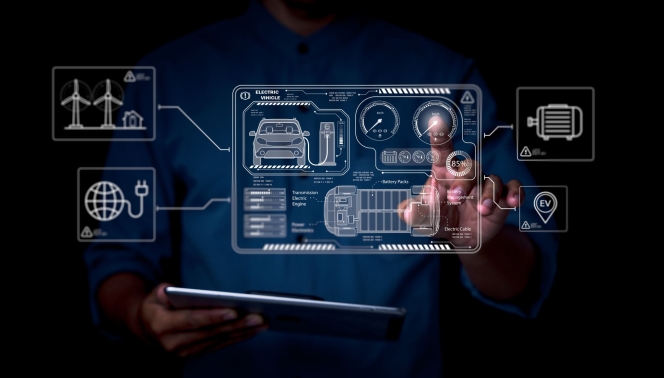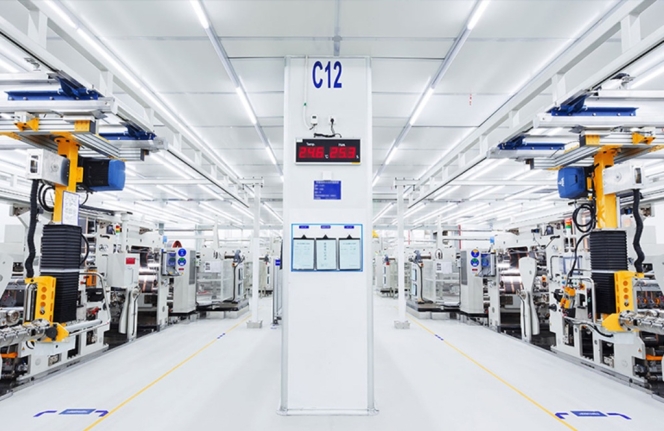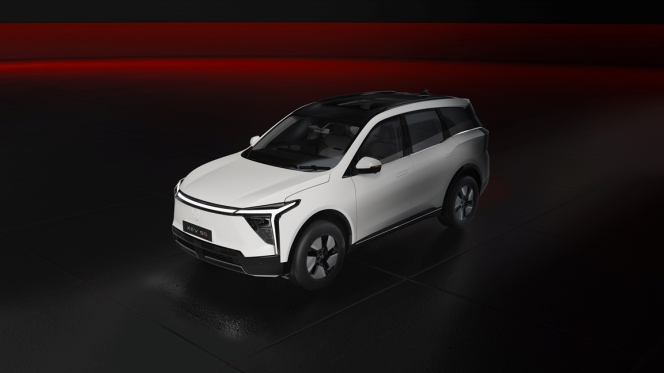
Toyota made a splash in India recently by showcasing a flex-fuel hybrid vehicle. This amounted to a logical step in its efforts to highlight its work in the area of alternative fuel technologies soon after it supplied the Union Transport Minister, Nitin Gadkari, with a hydrogen fuel cell car. The year 2022 has been a year of much action and words in the area of alternative fuels in India. The Brazilian Ambassador to India, d. Andre Aranha Correa Do Lago, said in his speech at the recent SIAM Annual Convention that Brazil and India are the two largest sugarcane producers and have the potential to produce enormous amounts of ethanol. “Brazil will work with India on flex-fuel technology, sustainable aviation fuels, second generation ethanol, hybrid flex-fuel vehicles, fuel cells etc.,” he averred.
At the same event, Gadkari mentioned that through innovation, science, research, technology and entrepreneurship, the auto industry should convert knowledge to fuel and devise alternative fuel technologies. Stating that the petroleum product import is amounting to INR 16 trillion and is a challenge for the country, he averred, “I am happy to see good growth of electric vehicles across segments. Around 1.5 million EVs have been registered and the overall sales figure is up by 162 percent. The sales growth of electric two-wheelers is 425 percent, electric three-wheelers is 75 percent, electric four-wheelers is 230 percent and electric buses is 1,600 percent. The number of new start-ups in the domain is 250.” In October 2022, Chinese electric automaker BYD announced the launch of its second electric vehicle in India in the form of an electric SUV called the Atto 3. It will commence sales starting January 2023.
As electric vehicles continue to gain strength across segments, it is the two-wheeler segment that seems to gain in sales numbers the most. No surprise then that Taiwanese electric two-wheeler major Gogoro is expected to launch electric scooters in India soon. The company has been having a tie-up with Hero MotoCorp in India for some time now and the two are said to be working on developing a battery swapping technology that is suitable for the local and regional requirements. Hero MotoCorp and Gogoro are not the only ones; there are other companies too – like Sun Mobility – that are already working on battery swapping technology.
With the need for smart grids and a battery charging infrastructure growing as part of the thrust towards alternative fuel technologies to achieve net-zero carbon emissions, the question being asked is: which alternative fuel technology will finally triumph with efforts being made in various areas and directions? A portion of the auto industry is betting on hydrogen as the ultimate alternative fuel. Another portion of the industry is betting on flex-fuel and other alternative fuel technologies, including various gases like LNG and CNG.
With countries like Russia banking on gaseous fuel as a means to reduce carbon emissions since they are available in abundance there, it is countries like India, which imports 85 percent of the fuels, that needs to find out what it has in abundance and select as the alternative fuel of choice, mentioned an industry expert from Europe. He added that a unique alternative fuel technology from India could actually lead to a global breakthrough and help mobility advance in a new direction altogether. With the possibility of such a disruption always present, the current situation is looking a bit unorganised with a variety of alternative fuels being taken into consideration.
On one hand, CNG stations are being increased and commercial vehicle operators are taking to it, while on the two-wheeler level, it is the electric vehicle technology that is gathering pace. The most diverse are the efforts at the passenger car level, where Maruti Suzuki and Toyota seem to look at hybrid and flex-fuel, whereas the ones like BYD, MG and Tata Motors are looking at electric to go net-zero carbon. The investment in BS VI technology, which promised water at the tailpipe through emissions cleaner than the air, is yet to fructify for some or many automakers and the call for rapid development in alternative fuel technologies is being summoned.
With sustainability being the mantra as the auto industry in India sees good days after a prolonged slowdown, the high inflation and resulting steep increase in vehicle prices is already threatening to spoil the party. A point of worry being that if the work on alternative fuel technologies is affected as inflation is likely to bite harder in 2023, the need to keep global temperatures from rising above the 1.5-degree Celsius mark stays. The auto industry is expected to contribute the most and also ensure sustainable, affordable and desirable mobility at the same time. A tightrope walk beckons as the mantle of alternative fuel technologies can’t be abandoned.
One thing is clear that what holds for India is what India has in abundance. Like Russia has gas, India could do well in developing technologies that can create gas from waste and other means available locally in abundance. Rather than politicising city waste that is often dumped just outside the city, it will serve if it could be turned into fuel to power automobiles as well as industrial furnaces and other machines. Afterall, despite all the efforts in electrification and other alternative fuel technologies, roughly 95 percent of the vehicles that continue to sell the world over are still powered by IC engines!
Trinseo Launches Fourth-Generation Binder For The Next Wave Of EV Batteries
- By MT Bureau
- December 03, 2025

Trinseo has introduced its latest innovation, the Fourth-Generation SBR Binder Platform, designed to meet the evolving demands of electric vehicles and battery energy storage systems. This development reflects the company's strategic focus on delivering high-performance materials essential for the global shift towards sustainable energy.
The platform results from advanced polymer science and collaboration with battery manufacturers, targeting key industry requirements such as increased energy density, superior durability and more efficient production. It provides a significant improvement in peel strength, enabling stronger electrode bonds, thicker coatings and higher manufacturing speeds. These attributes are vital for developing higher-capacity batteries that can extend driving range and improve storage solutions.
The inaugural product, VOLTABOND 109 Latex Binder, offers this next-generation performance with broad compatibility across various anode materials and manufacturing processes. Its design ensures excellent stability and low resistance, supporting faster charging and long-term reliability. To ensure robust supply, Trinseo will produce the platform locally within major global regions, enhancing responsiveness to battery production hubs.
Rooted in decades of expertise, this new platform establishes a foundation for future innovations tailored to diverse customer needs across the battery value chain.
CATL And Stellantis Begin Work On EUR 4.1 Billion Spanish Battery Plant
- By MT Bureau
- November 28, 2025

CATL and Stellantis broke ground on a EUR 4.1 billion battery plant in Figueruelas, Spain, on 26 November. The 50:50 joint venture will produce lithium-iron-phosphate battery cells and targets an annual production capacity of 50 GW/h.
The project, which is Spain’s largest battery factory, is backed by over EUR 300 million in EU funds, with production expected to start in late 2026.
According to unions, around 2,000 Chinese workers will help construct the site, a point of contention with local authorities and residents. Also, 3,000 Spanish staff are to be hired and trained later.
Spanish authorities and residents have voiced concerns about job opportunities for local workers and potential strain from the influx of foreign employees. CATL Vice President Meng Xiangfeng said earlier in November the company needed experienced technicians to build and fine-tune production lines, with plans to train local workers to take over operations gradually.
David Romeral, Director General of CAAR Aragon, a network of automotive businesses in the region, said: “We don’t know this technology, these components – we’ve never made them before. They’re years ahead of us. All we can do is watch and learn.”
The regional government is organising work permits for arriving workers while seeking to attract battery supply chain companies to Aragon. Some Chinese technicians and managers have already arrived, with several hundred more expected by year-end and nearly 2,000 by the end of next year.
CATL’s approach contrasts with its Hungarian site in Debrecen, where it hired mostly locals to build its European plant. However, a lack of local workers caused production to be delayed from late 2025 into mid-2026. The Figueruelas facility will serve as CATL’s third European manufacturing operation, alongside the Hungarian plant and one in Germany.
- Neuron Energy
- Equanimity Ventures
- Rajiv Dadlani Group
- Thackersay Family Office
- Chona Family Office
- Pratik Kamdar
- Rajesh Sehgal
- Rajiv Dadlani
Neuron Energy Secures INR 310 Million To Expand EV Battery Manufacturing For Four-Wheelers & Buses
- By MT Bureau
- November 27, 2025

Neuron Energy, an EV battery manufacturer, has raised INR 310 million in a Pre-Series B funding round led by Equanimity Ventures, Rajiv Dadlani Group, Thackersay Family Office and Chona Family Office, with participation from Family Offices and HNI investors. With this, Neuron Energy has raised INR 810 million to date.
The funding will be used to expand Neuron Energy’s manufacturing capacity to 3 GWh and to establish a fully automated, large-scale battery facility for electric four-wheelers and buses at Chakan, Pune. The capital will also strengthen the company’s R&D capabilities, accelerate domestic growth, and broaden its footprint in international markets.
Pratik Kamdar, CEO and Co-Founder, Neuron Energy, said, “This Pre-Series B round is a defining step in our mission to industrialise world-class battery manufacturing in India. As EV adoption accelerates, we are focused on building capacity, embedding automation, and pushing the boundaries of performance and reliability. This investment ensures we can deliver at scale, both in India and globally.”
The company said it operates with a low-CapEx and low-OpEx business model. It has been growing profitably year-on-year and is on track to achieve INR 2 billion in revenue this year. The company is also confident of achieving sales of over INR 9 billion, with profitability, over the next few years.
Rajesh Sehgal of Equanimity Ventures, added, "We see immense potential in Neuron Energy’s approach to EV battery innovation and scalability. Their focus on quality, automation, and energy efficiency aligns with the evolving demands of the EV industry in India and beyond. We are proud to support their next phase of growth as they scale into new vehicle categories and manufacturing capacities."
The new facility reinforces the company’s position in two-wheeler EV batteries and signals a strategic entry into heavier vehicle segments. This supports Neuron’s vision to become a comprehensive EV battery solutions provider.
Rajiv Dadlani, from the Family Office of the Rajiv Dadlani Group, said, "Neuron Energy demonstrates remarkable potential to become the market leader, with their renewed focus, in delivering top-quality products. The company and its founders are highly committed to delivering rigorously tested and safe-to-use Li-Ion smart batteries. We are confident that they will continue to thrive and set new standards in the industry."
Mahindra Intros XEV 9S Electric 7-Seater SUV At INR 1.99 Million, Deliveries From 23 January
- By MT Bureau
- November 27, 2025

Mahindra has launched the XEV 9S, an electric 7-seater SUV built on the INGLO platform, with prices starting at INR 1.99 million (ex-showroom). The XEV 9S is powered by MAIA, described as India’s fastest automotive mind.
The EV comes with a 70 kWh battery, delivering a power of 180 kW and 380 Nm of torque. It offers a claimed real-world range of 500 km from its LFP battery, which comes with a Lifetime Warranty. The SUV is stated to be the fastest 7-seater in its class, reaching zero to 100 kmph in 7.0 seconds, with a 202 kmph top speed.
The fully-loaded Pack Three Above 79 kWh variant is priced at INR 2.94 million ex-showroom with bookings open on 14 January 2026 and deliveries starting on 23 January 2026.
R Velusamy, President - Automotive Business, Mahindra & Mahindra and Managing Director, Mahindra Electric Automobile, said, “We have always believed that technology is meaningful only when it expands human possibility. The XEV 9S built on the INGLO electric origin platform does exactly that by creatin space – more than anyone else and gives a smooth and noise free ride. THE MAIA brain enables many of its high-tech features, making it the most advanced offering for its price.”
Nalinikanth Gollagunta, Chief Executive Officer - Automotive Division, Mahindra & Mahindra and Executive Director, Mahindra Electric Automobile, said, “The future of Indian mobility will belong to brands that don’t just electrify vehicles, but reimagine categories. With the XEV 9S, we’re not just playing in the EV segment, we’re expanding it. This SUV signals the start of a BIG new electric era for Mahindra - one built on scale, on purpose, and on a deep understanding of how India moves. The attractive prices starting at ₹ 19.95 Lakh make a very high-tech product accessible, with bookings opening on Jan 14 and deliveries start on Jan 23.”
The XEV 9S is an expression of Mahindra’s Heartcore Design philosophy, featuring a stance, lines, a gloss finish and interiors. The vehicle is designed to be silent on wheels.
Key highlights include:
- Space: Offers 4,076-litre of cabin space (for front and second row), boot space up to 527-litre and 150-litre of Frunk space. The third-row features 50:50 split seats.
- Suspension: Features Intelligent Adaptive dampers with i-Link at the front and 5-Link independent suspension at the rear.
- Driver Aids: Includes L2+ ADAS with five Radars and one Vision Camera, Driver Drowsiness Detection with DOMS (Eyedentity) and Secure360 Pro for live view and recording.
- Interior Comfort: Features Powered Boss Mode, ventilated second row seats, recline and sliding adjustment, sunshade for second row windows, Acoustic ‘Laminated’ Glass and wireless phone charging.
- Technology: Equipped with Brake by Wire with IEB, High Power Steering with VGR, VisionX – AR HUD, AutoPark Assist, and 140 features including Digital Key, NFC and Charge Scheduler.
- Entertainment: Includes a 16-Speaker Harman Kardon Audio system with Dolby Atmos, three 31.24 cm screens, 5G Connectivity and Fun & Work Apps.
- Efficiency: Running costs are INR 1.2 per km, with maintenance costs of INR 40 paise per kilometre and negligible road tax. Business owners benefit from 40 percent depreciation.
Pratap Bose, Chief Design & Creative Officer - Auto & Farm Sectors, Mahindra & Mahindra, said, “Designing the XEV 9S wasn’t about adding lines to a surface, it was about shaping a feeling. We wanted it to feel like stepping into a personal sanctuary, yet one that carries the pulse of modern India. Electric gave us the canvas; INGLO gave us the freedom to sculpt light, space and comfort. The result is an SUV that wears its size with grace and its technology with humility. It’s expressive, it’s calm, and it’s unmistakably Mahindra - built for a nation whose aspirations are only getting bigger.”






Comments (0)
ADD COMMENT